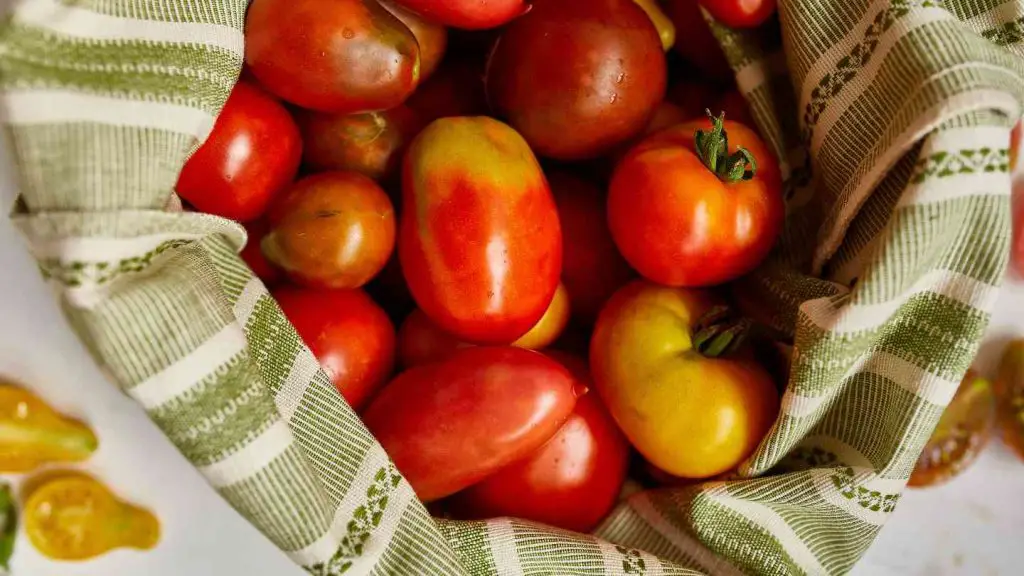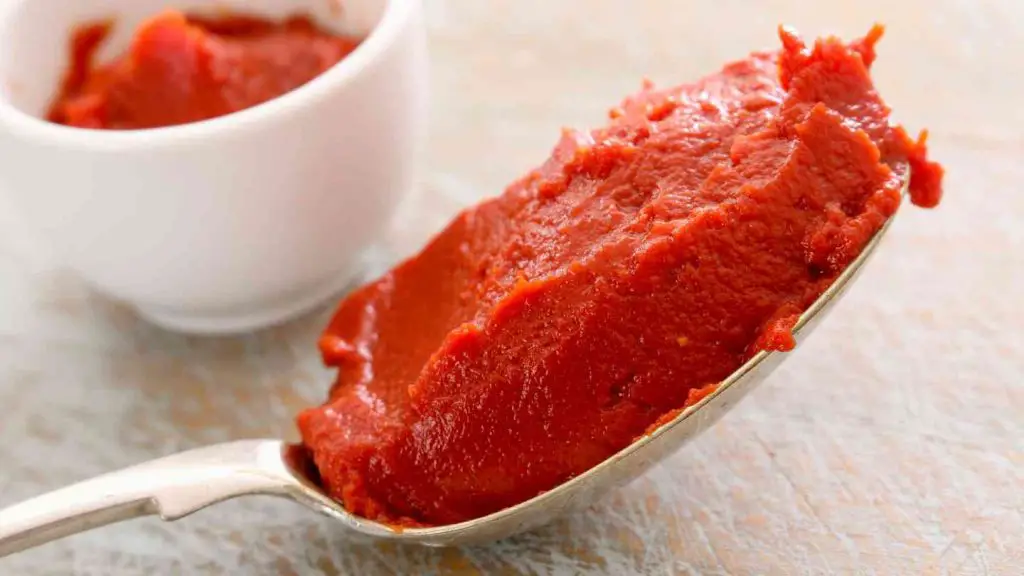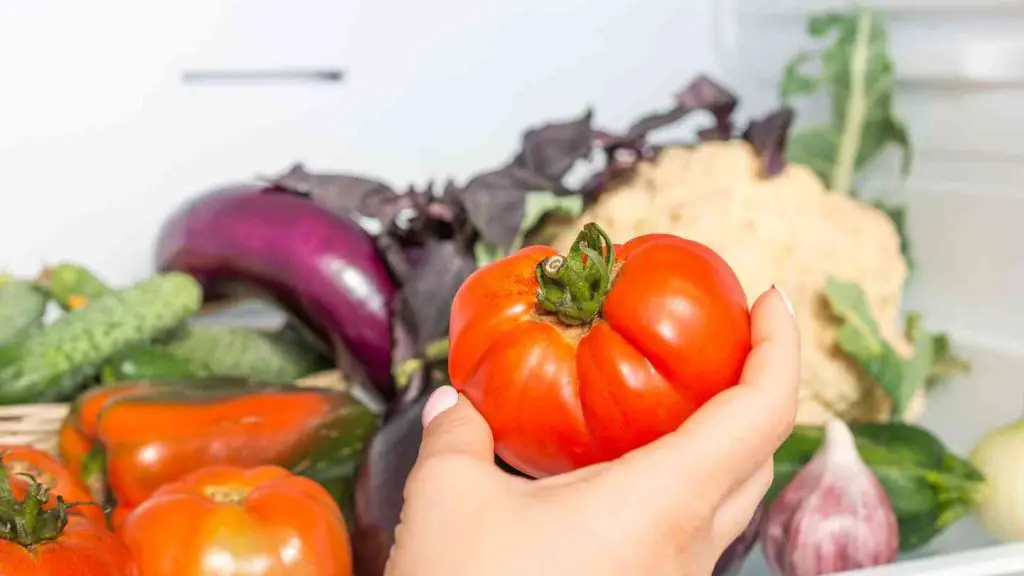Tomatoes are a staple ingredient in many dishes, adding flavor, color, and juiciness to meals. However, there is often confusion about whether tomatoes should be refrigerated or stored at room temperature.
Today, we will explore the science behind tomato storage and provide you with step-by-step instructions on how to properly store tomatoes and increase their lifespan to maintain their taste and texture. Whether you are a beginner or an experienced cook, or looking to find more information on these fruits, this guide will help you make informed decisions about tomato storage.
Related: Do Uncrustables Go Bad If Not Refrigerated? (7 Facts To Know in 2023)
Understanding the Science Behind Why Refrigeration Affects Tomatoes

To understand whether tomatoes need to be refrigerated, it’s important to know the science behind how refrigeration affects them. Tomatoes are unique fruits that continue to ripen after they are harvested. Their ripening process involves the breakdown of complex carbohydrates into simple sugars, resulting in a sweeter and juicier tomato.
However, when tomatoes are exposed to cold temperatures, the ripening process is interrupted. This is because tomatoes contain an enzyme called pectinase, which is responsible for breaking down the cell walls and softening the fruit. When tomatoes are refrigerated, the pectinase enzyme becomes less active, leading to a loss of flavor and a mealy texture.
Furthermore, refrigeration can also cause tomatoes to lose moisture, resulting in dry and less juicy fruit. Due to these, most people recommend avoiding refrigerating tomatoes to preserve their taste, texture, and juiciness.
Also read: how long can cooked rice stay in fridge (an expert cheatsheet)
Room Temperature vs. Refrigeration: Which is Better for Tomatoes?
Now that we understand the science behind tomato storage, let’s compare room temperature and refrigeration to determine which is better for tomatoes.
| Storage Method | Room Temperature | Refrigeration |
|---|---|---|
| Temperature | Around 20-25°C | 4-10°C |
| Shelf Life | 3-5 days | 1-2 weeks |
| Flavor | Rich and ripe | Mild |
| Texture | Juicy and soft | Firm |
| Ripening | Continues to ripen | Slows down |
| Storage Considerations | Keep away from sunlight and ethylene-producing fruits | Store in a cool, dry place away from other fruits and vegetables |
This comparison table outlines the differences between storing tomatoes at room temperature and refrigeration. Ensure you have a modern refrigerator that is in good working condition, as this will help keep your tomatoes safe and last longer.
Room Temperature: Tomatoes are most flavorful when stored at room temperature. This allows them to continue ripening naturally, enhancing their sweetness and juiciness. Just like oranges, tomatoes stored at room temperature can last 3 to 5 days.
When stored at room temperature, tomatoes also avoid the negative effects of refrigeration, such as loss of flavor and texture. It is important to note that room-temperature storage is suitable for ripe tomatoes that will be consumed within 3-5 days.
Refrigeration: While refrigeration is not ideal for storing ripe tomatoes, it can be used to slow down the ripening process or extend the shelf life of unripe tomatoes. If you have ripe tomatoes that you won’t be able to consume within a few days, refrigerating them can help preserve their freshness for a short period. However, it is important to note that refrigerated tomatoes will lose some flavor and texture, making them more suitable for cooked dishes rather than eating raw.
How to Store Ripe Tomatoes at Room Temperature

When it comes to storing ripe tomatoes at room temperature, there are a few important considerations to keep in mind. Proper storage techniques can help maintain the quality and freshness of the tomatoes for a longer period. Let’s explore how to store whole and cut ripe tomatoes at room temperature.
Storing Whole Ripe Tomatoes
- Inspect the tomatoes: Before storing, carefully examine each tomato to ensure it is ripe and free from any signs of rot or damage. Ripe tomatoes should be firm but yield slightly to gentle pressure.
- Keep stem side down: Place the ripe tomatoes stem side down on a clean countertop or a plate. This helps prevent moisture loss from the stem area, keeping the tomatoes juicier for longer.
- Avoid direct sunlight: Ensure that the tomatoes are stored away from direct sunlight. Excessive heat and sunlight can cause the tomatoes to ripen too quickly and spoil.
- Store in a cool area: Find a cool spot in your kitchen or pantry to store the tomatoes. Avoid storing them near appliances or areas with high humidity, as this can accelerate the ripening process and lead to spoilage.
- Do not overcrowd: Make sure there is enough space between each tomato to allow for proper air circulation. Overcrowding can cause the tomatoes to ripen unevenly and increase the risk of mold or rot.
- Check regularly: Periodically check the tomatoes for any signs of overripening or spoilage. Remove any tomatoes that show signs of decay to prevent them from spreading to other tomatoes.
With these action steps, you should be able to store whole ripe tomatoes at room temperature for up to 3-5 days while maintaining their flavor and texture.
Storing Cut Ripe Tomatoes
If you only plan to use a portion of a ripe tomato and need to store the rest, follow these steps to maintain its freshness:
- Cut the tomato: Slice the ripe tomato as desired, ensuring clean and sharp utensils are used to avoid bruising or crushing the fruit.
- Place in an airtight container: Place the cut side of the tomato down in an airtight container or wrap it tightly in plastic wrap. This helps prevent moisture loss and keeps the tomato from drying out.
- Store in the refrigerator: If you don’t plan to use the cut tomato within a day or two, it is best to store it in the refrigerator. This will slow down the ripening process and maintain its freshness for a longer period. However, it is important to note that refrigerated tomatoes may lose some flavor and texture, therefore avoid placing them in the freezer (the fruit section of your refrigerator works just fine), as this may cause the fruits to freeze more than you want them to be.
- Allow to come to room temperature: If you store a cut tomato in the refrigerator, it is recommended to let it cool down to room temperature before using it in your recipes. This helps restore some of the flavor and texture that may have been lost during refrigeration.
How to Store Unripe Tomatoes at Room Temperature
Unripe tomatoes have a longer shelf life and can be stored at room temperature until they fully ripen. These fruits might stay up to a week before usage if stored correctly. Follow these steps to properly store unripe tomatoes:
- Separate the tomatoes: If you have multiple unripe tomatoes, it is important to separate them to prevent the spread of mold or rot. Place each tomato in a single layer in a shallow container or on a plate.
- Choose a cool spot: Find a cool area in your kitchen or pantry to store the unripe tomatoes. Avoid storing them near appliances or areas with high humidity, as this can accelerate the ripening process and lead to spoilage.
- Avoid direct sunlight: Just like ripe tomatoes, ensure that the unripe tomatoes are stored away from direct sunlight. Excessive heat and sunlight can cause the tomatoes to ripen too quickly and spoil.
- Check regularly: Periodically check the tomatoes for any signs of ripening. Gently press the tomatoes to check for softening. Once the tomatoes have reached your desired level of ripeness, they can be consumed or transferred to the refrigerator to slow down the ripening process.
Freezing Tomatoes: A Guide to Long-Term Storage

If you have an abundance of tomatoes and want to extend their shelf life beyond a few days, freezing is a great option. Freezing tomatoes allows you to preserve their flavor and texture for several months. Here’s a step-by-step guide on how to freeze tomatoes:
Freezing Whole Tomatoes
- Choose ripe tomatoes: Select ripe tomatoes that are free from any signs of rot or damage. The quality of the tomatoes before freezing will determine the quality of the thawed tomatoes.
- Blanch the tomatoes: Bring a pot of water to a boil and prepare a bowl of ice water. Carefully drop the tomatoes into the boiling water for about 30 seconds to 1 minute, or until the skins start to loosen. Use a slotted spoon to transfer the tomatoes to the ice water to cool down quickly.
- Peel the tomatoes: Once the tomatoes have cooled down, use a knife or your fingers to peel off the skins. The blanching process helps loosen the skins, making them easier to remove.
- Remove the core: Cut out the core of each tomato using a sharp knife. This step is optional, but it can help prevent any bitter taste that the core may contribute to the tomatoes.
- Place in freezer-safe bags: Place the peeled and cored tomatoes in freezer-safe bags, removing as much air as possible from the bags before sealing. Alternatively, you can use a vacuum sealer to remove excess air.
- Label and date the bags: Write the date of freezing on the bags and label them with the type of tomatoes (e.g., Roma, beefsteak) if you are freezing different varieties.
- Freeze the tomatoes: Place the bags of tomatoes in the freezer, making sure they are arranged in a single layer to freeze them quickly. Once frozen, you can stack the bags to save space.
With this method, you can freeze whole tomatoes for up to 8-12 months. Frozen tomatoes are best used in cooked dishes like soups, stews, sauces, and casseroles.
Freezing Sliced Tomatoes
- Choose ripe tomatoes: Select ripe tomatoes that are free from any signs of rot or damage. The quality of the tomatoes before freezing will determine the quality of the thawed tomatoes.
- Slice the tomatoes: Use a sharp knife to slice the tomatoes into 1/2-inch thick slices. You can choose to remove the skins or leave them on, depending on your preference.
- Arrange on a baking sheet: Place the tomato slices in a single layer on a baking sheet lined with parchment paper. Make sure the slices are not touching each other to prevent them from sticking together.
- Flash freeze the slices: Place the baking sheet with the tomato slices in the freezer and allow them to freeze for 1-2 hours, or until they are firm to the touch. Flash-freezing the slices individually will prevent them from clumping together in the freezer bags.
- Transfer to freezer bags: Once the tomato slices are frozen, quickly transfer them to freezer-safe bags. Remove as much air as possible from the bags before sealing, or use a vacuum sealer for airtight packaging.
- Label and date the bags: Write the date of freezing on the bags and label them with the type of tomatoes if you are freezing different varieties.
- Freeze the slices: Place the bags of tomato slices in the freezer, arranging them in a single layer to freeze them quickly. Once frozen, you can stack the bags to save space.
By following these steps, you can freeze sliced tomatoes for up to 8-12 months. Frozen tomato slices are perfect for adding to cooked dishes or thawing and using as toppings for sandwiches and salads.
Freezing Tomato Puree
- Choose ripe tomatoes: Select ripe tomatoes that are free from any signs of rot or damage. The quality of the tomatoes before freezing will determine the quality of the thawed puree.
- Blanch and peel the tomatoes: Follow the same blanching and peeling process as described in the “Freezing Whole Tomatoes” section.
- Remove the seeds and excess liquid: Cut the peeled tomatoes in half horizontally and gently squeeze out the seeds and excess liquid. This step is optional, but removing the seeds can help prevent the puree from becoming watery when thawed.
- Puree the tomatoes: Place the seeded tomatoes in a blender or food processor and puree until smooth. You can add a pinch of salt or a small amount of lemon juice to enhance the flavor, but this is optional.
- Portion and package the puree: Pour the tomato puree into freezer-safe containers or ice cube trays for smaller portions. Leave some headspace in the containers or trays to allow for expansion during freezing.
- Label and date the containers: Write the date of freezing on the containers or trays and label them with the contents (e.g., tomato puree). This will help you identify the puree easily when it’s time to use it.
- Freeze the puree: Place the containers or trays in the freezer, making sure they are arranged in a single layer for quick freezing. Once frozen, you can transfer the puree cubes from the trays to freezer bags for easier storage.
Tomato puree can for up to 8-12 months when frozen. Frozen tomato puree is perfect for making sauces, soups, and other tomato-based dishes.
Frequently Asked Questions About Tomato Storage
- How do I know if a tomato is ripe? Ripe tomatoes should be firm but yield slightly to gentle pressure. They should have a vibrant color and a sweet aroma. Avoid tomatoes that are overly soft, mushy, or have any signs of mold or rot.
- Can I freeze tomatoes without blanching them? While blanching helps loosen the skins and preserve the quality of the tomatoes during freezing, it is not necessary. You can freeze tomatoes without blanching, but keep in mind that the skins may become tough and the texture may change slightly.
- Can I freeze tomatoes in glass jars? It is generally not recommended to freeze tomatoes in glass jars unless the jars are specifically designed for freezing. The liquid in the tomatoes can expand during freezing, causing the glass to crack or break. Instead, opt for freezer-safe bags or containers.
- How long can I store frozen tomatoes? Frozen tomatoes can be stored for up to 8-12 months. However, for the best quality, it is recommended to use them within the first 6-8 months.
- Can I freeze tomatoes that are already cooked? Yes, you can freeze cooked tomatoes. Allow the cooked tomatoes to cool completely before transferring them to freezer-safe containers or bags. Make sure to leave some headspace for expansion during freezing.
Final Thoughts
In conclusion, proper tomato storage is essential for preserving its taste, texture, and juiciness. Whether you choose to store them at room temperature, in the refrigerator, or freeze them for later use, properly stored tomatoes will enhance the flavor of your dishes and bring a burst of summer to your meals.






